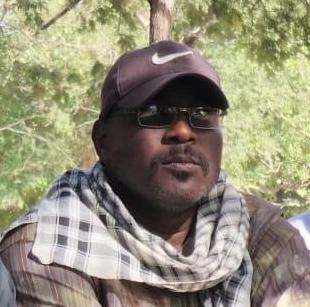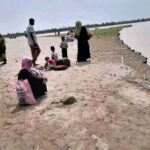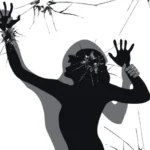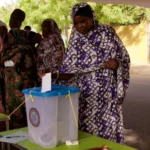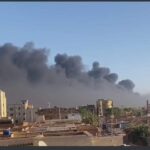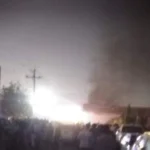Saleh Al-Danao
Rehead Al-Berdi is located in the southwestern direction of the state of South Darfur. It was quiet and reassuring.
Its residents practiced pastoralism and a little agriculture and simple trade.
What distinguishes it is that it is located about 150 kilometers from the state of Central Africa and about 130 kilometers from the state of Chad.
After the outbreak of the April War, huge numbers of people affected by the war flocked to the city of Rehead Al-Berdi, considering that it was a remote, remote and safe area. Before they could recover from the state of astonishment and comprehend it, a tribal conflict broke out in the areas north of the city, “Kabom” and “Markondi”, which are about 30 km from the city, between the Salamat and Bani Halba tribes, which resulted in a miserable humanitarian situation.
The residents of these areas fled to the city of Rehead Al-Berdi. They have nothing but worn-out clothes on their bodies. This is what gave them the opportunity to escape death.
Women’s suffering:
Women live in tragic conditions in shelters.
Cases of panic, physical effort, and walking have resulted in miscarriages, among them sick children and widows.
The terror did not leave them an opportunity to grieve the loss of their families.
“Um Jamal,” who lost her husband as a result of the tribal war and was displaced with her children, says, “We only have one dress, this is on my body, and in my womb is a fetus. I lost my husband in difficult circumstances. I could not even find a “classroom” at school inside the shelter center to shelter my children when its still raining, in everyday but the shade of this tree. She adds, “I was displaced with my neighbors and the rest of my family in Khartoum, and I do not know their further fate.”
On the other hand, “Khadija” was displaced to the “Ghalia Secondary School” shelter center in the Rehead Al-Berdi locality, while she was in the last month of her pregnancy.
She said that for more than a month, she had been without shelter or stability. She was unable to move due to lack of nutrition.
She was transferred by volunteers to a gynecologist and Giving birth. She is also displaced, and only one woman in the city was examined and an operation was scheduled for her immediately because her fetus was in an abnormal position inside the uterus.
The doctor said that the fetus suffers from a lack of water inside the uterus at the end of the period of childbirth.
This is the seventh birth of “Khadija.” She was immediately prepared for the operation, surprising everyone that she had symptoms of a normal birth and gave birth to “Naima,” whom she named after one of the volunteers.
A girl in her twenties found herself displaced in the “Khaled bin Al-Walid Primary School” shelter in the same city with her sister and her mother, who is elderly.
The girl says that her father returned to the city of Nyala to inspect their house that had been burned.
We were invited to a treatment camp for the displaced, and the general doctor summoned me to meet “Fatima,” another displaced woman who suffers from hemorrhoids to a severe, serious, and very late level.
When she met the doctor, her admission for surgery was scheduled immediately to stop the barrier of not having someone work on writing the medical declaration for the purpose of the operation. Surgery, each one suffers more than the other.
All the displaced people in Reheadd Al-Berdi live in tragic humanitarian conditions, with a severe food shortage in light of the general economic deterioration and the state of poverty and poverty among the host community, and the displaced lose the most basic necessities of life.
He appeals to the displaced people that they are in dire need of healthy water, toilets, food, and shelter tools such as tents, cooking utensils, drinking equipment, beds, and treatment due to cases of malaria, typhoid, ophthalmia, and obstructed births as a result of both nutritional and psychological conditions.
It is noteworthy that the total number of displaced people in the city of Rehead Al-Berdi is estimated at 4,300 families living in 35 shelter centers.

